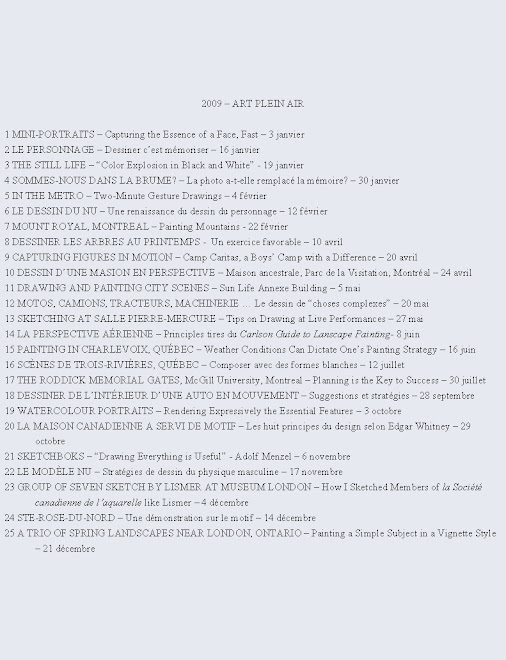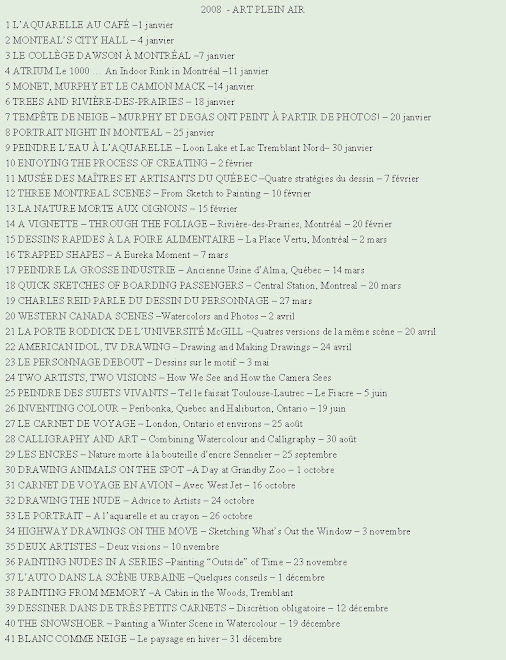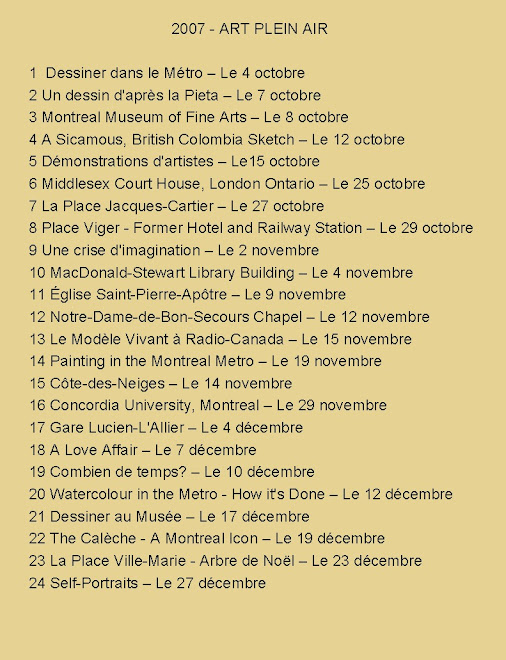1. For a few cents or at most a dollar pick up a novel at a used book store.
2. Open it up at any page, pick up a drawing tool and start sketching right across the print.
3. This “sketch book” is perfect for drawing people because the unaware "model" will assume that you are reading.
4. After trial and error I found that a roller ball pen flowed well over the paper of the book I had chosen, better than a felt tip pen. I use it to indicate the contours of my figures.
5. Because a contour drawing remains just that, a contour, I use a color pencil for the flesh tones (face and hands).
6. For the darker values I realized that the newsprint sheets of the pages I drew across accepted the Ivory Black no 6700 Derwent Drawing pencil better than graphite. But you will have to experiment yourself to see what suits you best depending on the “type” of page you draw across.
7. Once upon a time ... I found a seat in a bookstore, sat down and drew novel seekers in a novel way. Not one looked my way because they thought I was absorbed in my book. Instead, I was reading them and transcribing them into forms rather than print.
8. Another time I sat on steps and stepped up my drawing skills by sketching climbers and “descenders”. Pausing between the flow of passersby I read a few lines while waiting for more subject matter.
9. I figure I haven’t finished exploring this novel way of drawing as I am discovering that I can add color later to my figures or backgrounds after the figures have left. I figured that one on my own!
10. Sometimes the numbered chapters influence my drawings, especially the tens. I add eyewear to these. When I sketch someone reading a novel I wonder if he or she has ever thought of writing one or better still - draw in one!
I must admit that this novel idea was not my own. An artist friend, Rochelle Mayer, has been sketching in used novels for quite a while ... while riding the subway. She then uses the sketches for future studio work. What a novel idea!
Finally, since every figure drawn has a beginning and an end, I draw a "climax" at every page...more than the author probably ever imagined!
Raynald Murphy sca









































